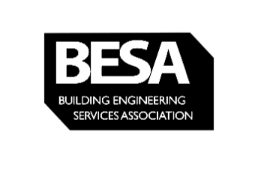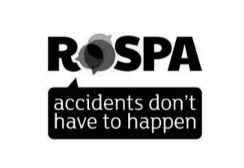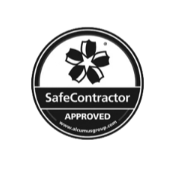When it comes to workplace air quality standards, you can never be too careful.
After all, it’s not just about the comfort of your employees - it’s about their health too, both in the short term and the long term.
There are a huge variety of potential contaminants a worker could be exposed to - from lack of ventilation and mould to asbestos, airborne chemicals, dust from construction, pesticides and more.
A lack of proper management of these issues can expose workers to harmful substances on a daily basis, potentially leading to respiratory problems, or even cancer and death.
But what should business owners do to mitigate this risk, and how could it affect you?
Indoor Air Quality in the Workplace
Indoor Air Quality or IAQ is a term that’s used to refer to air quality in working environments such as offices.
Causes of bad indoor air quality can include:
- Untreated moisture/damp
- Contaminants generated by work
- Radon
- Contaminants from outdoors/environmental pollution
As a result, business owners would do well to ensure workspaces have both good ventilation, and that any dangerous substances created as a result of industrial work are taken care of appropriately.
Health Risks Associated With Poor Indoor Air Quality
The early symptoms associated with respiratory damage from exposure to contaminants is often difficult to distinguish from regular cold or flu symptoms such as a cough, runny nose, sore throat, and/or sneezing.
One telltale sign to look out for is if people often become sick while at work, and feel better while elsewhere, but unfortunately, long term exposure can also lead to feeling sick 24/7.
Employees who are regularly exposed to contaminants would do well to wear breathing masks, ensure workspaces are well ventilated and to treat regular cold symptoms as a more serious issue than people working elsewhere usually would.
Other symptoms can include:
- Exacerbated asthma in sufferers
- Fatigue and loss of energy
- Itchy eyes, nose, lungs or throat
Exposure to dampness, fungi and other problems caused by moisture can also lead to the above along with allergic reactions, shortness of breath and worse.
When it comes to appropriate workplace air quality monitoring, the main concerns to check for include:
Chemical Pollutants
This can include chemicals that are the product of burning materials such as carbon monoxide, nitrogen dioxide and formaldehyde, as well as construction materials such as plastics, glues or asbestos, accidental spills, outdoor pollution pulled inside by air conditioning, and more.
Particles and Dust
Dust from dangerous substances such as silica can often be present, but even dust from non-dangerous substances such as wood, stone and plaster can be dangerous when inhaled, or even deadly when inhaled regularly over the long term.
Biological Pollutants
This typically refers to bacteria and fungi spores that result from mould and damp, but in more specialised working environments such as zoological organisations, hospitals or research laboratories it can also include viruses, bacteria, animal skin cells, pollen, dust mites, and ammonia.
How to Improve Air Quality in the Workplace
When it comes to workplace air quality monitoring and improvement, there are three core lines of defence that organisations should use in accordance with the air quality regulations in the workplace.
Of course, before carrying out these methods of mitigation, there is one thing that should always be done in any workplace:
Workplace Air Quality Testing
From radon detection devices and carbon monoxide detectors to specialised air quality hardware, the first step is always to get a professional in to figure out exactly what you’re dealing with. Factors such as damp or outdoor pollutants being brought in via air conditioning mean there is a potential level of risk in any workplace, even those where no contaminants or dangerous substances are used as a matter of course.
Once an organisation is aware of the potential risks and contaminants that are present, as well as the workplace air quality regulations in the UK (or elsewhere), the next step is to carry out one of the following methods:
Eliminating or Controlling the Risk
If possible, the source of contamination should be eliminated. This might include building maintenance in the case of damp, substitution of certain products or ingredients, or building custom enclosures to prevent contaminants from spreading.
If the contaminant is a crucial part of the work being done and elimination is impossible, then the priority should instead be to control the risk.
This can include:
- Air filters
- Air extraction exhausts
- Ventilation to dilute contaminants with clean air from outside
However, it can also include something as simple as moving the main working area to another area of the building, reducing immediate exposure to contaminants.
Administrative Protections
If the above elimination techniques or controls are attempted and either fail or don’t provide a significant enough reduction in dangerous substances, the next step is for the executive staff of the organisation to enact and enforce administrative controls that reduce the potential risk of these substances.
This can include:
- Specific scheduling of tasks to minimise exposure, for example carrying out dangerous tasks at a time when other employees aren’t present
- Reducing the amount of dangerous chemicals used and enforcing a company-wide limit
- Training staff in the risks and how to both control the contaminants and protect themselves
- Maintaining a strict cleaning and housekeeping schedule, ensuring all contaminants are removed as early as possible once work is complete.
Protective Gear
Once all of the above is complete and the business is working within indoor air quality regulations and legislation, if any risk still remains, it will likely always be present.
The final step is simply to minimise risk and exposure to staff. This can include personal vacuum pipes for immediate removal of substances, respirators masks, gloves, hard hats, eyewear etc.
Companies that would rather not worry about this stuff and focus their time and efforts on growing and maintaining their business, may find it preferable to work with phs.
As the UK’s leading provider of air care services with operations centres in every UK city, we are your local provider, no matter where you are.
Our friendly, expert staff are experienced in entering your workplace, carrying out any work that needs to be done, and getting out with no interruption to your daily routine. To learn more about what we could do for your specific needs, contact us now or request a callback!


































